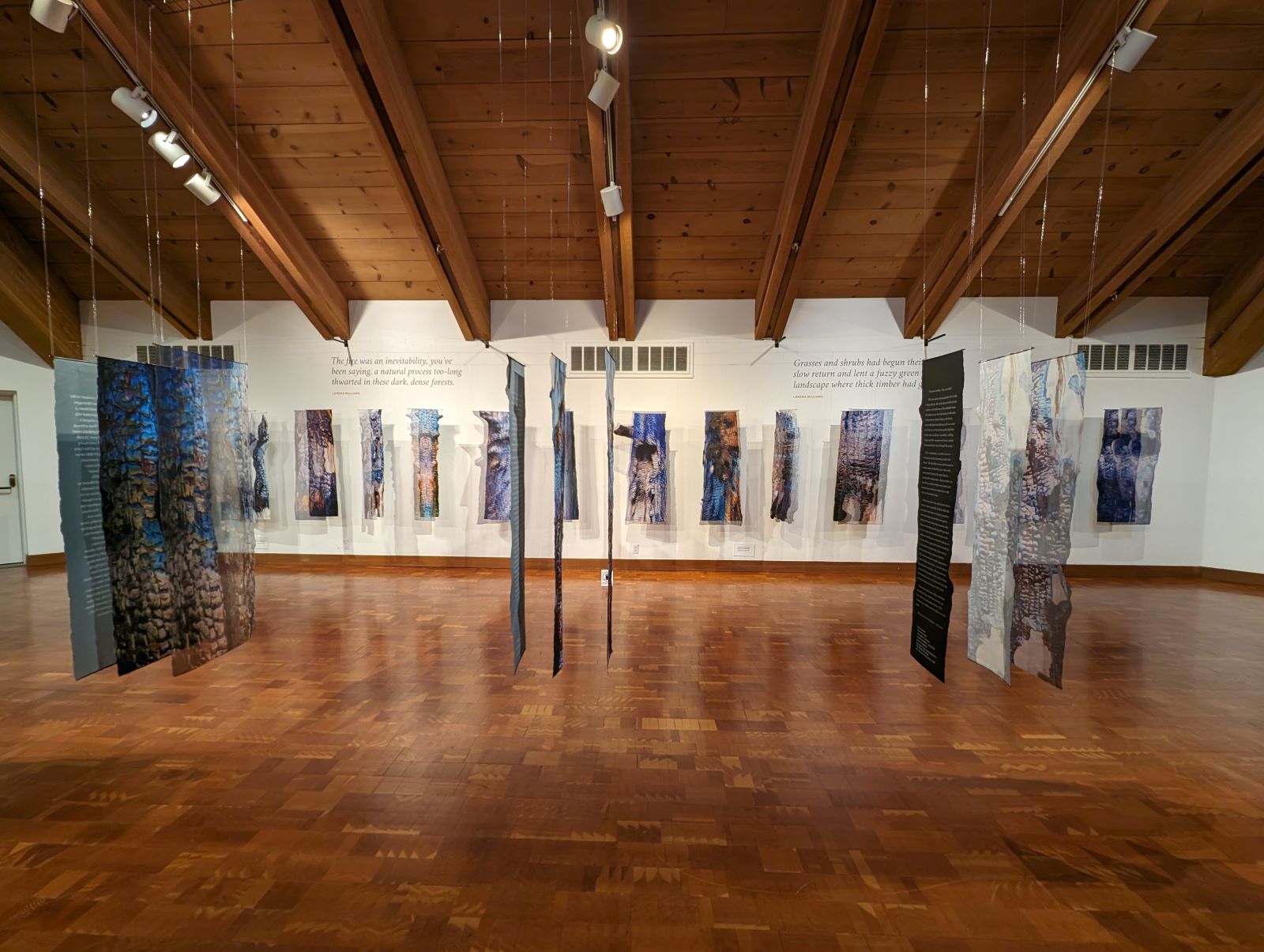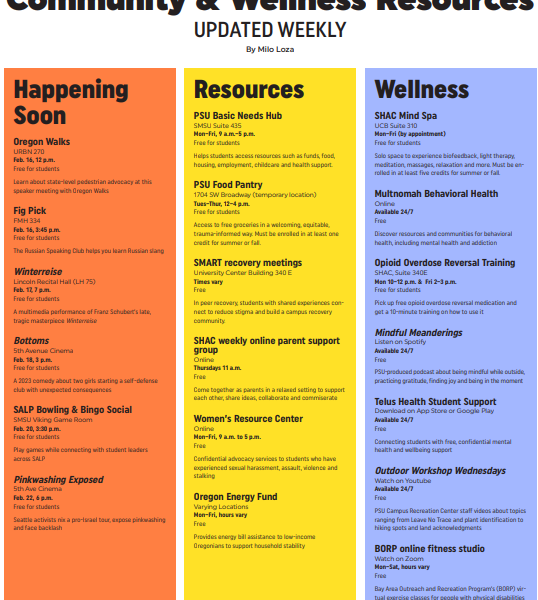The untamed ferocity of wildfires has long been a force of nature, shaping landscapes and ecosystems in both destructive and transformative ways. Once flames move across forests and leave trails of charred remnants, it often triggers complex conversations about the interplay between ecological resilience, human intervention and the need for unique, interdisciplinary engagement to adapt to the intensifying danger of wildfires.
Wildfires are a natural occurrence in Oregon’s forests, especially in the state’s dry forests where periodic burns are necessary to maintain overall forest health.
Many plants and trees have adapted to wildfires, and some species can’t survive without them. For example, a lodgepole pine needs heat from wildfires for its cones to open and release seeds. In Central and Eastern Oregon, periodic low-intensity wildfires burn smaller trees and brush away, fostering the regrowth of new trees and plants.
Dr. Andrés Holz—an Associate Professor at Portland State and expert in forests and wildfire ecology—spoke about the diverse ecosystems within the state. “It really depends [on] where in Oregon [you are],” he said. “We have at least maybe three or four types of ecosystems, and each of them functions very differently than others.”
There are two general types of forest fires—those that depend on fuel amount and those that rely on warmer conditions.
The weather conditions in Central and Eastern Oregon are warm and dry. Despite the scarcity of fuel, fires historically burn frequently—typically occurring every 10–15 years. However, the story changes on the western side of the Cascade Range, where there is abundant fuel but fires are more controlled by the humidity.
Fire suppression and climate change have impacted the climate and, thus, wildfires. Historically, Indigenous peoples managed the land through controlled, low-intensity burns. “Low-intensity fires on the landscape help reduce buildup of combustible debris and return nutrients to the soil, while also protecting the canopy overhead,” stated an article from the United States Department of Agriculture Forest Service.
In the drier forests of Oregon, fire suppression has led to denser growth, intensifying the impact of wildfires when they occur. Fires in these abnormally dense woods are more damaging than the frequent, low-intensity wildfires, because there is more fuel on the ground and less space between trees.
Leaving dry brush and bushes uncut creates ladder fuel, which fires can use to climb to the forest canopy, possibly burning every tree in the region.
“In dry forests—especially low and mid-elevation where fires were very common—[fuels] had massive implications,” Holz said.
Holz emphasized the need for collective efforts. “Those forests that were very sparse and open became denser and closer,” he said. “So, now we face a challenging and combined effect of denser forests, due to fire suppression, and warmer and longer fire seasons, due to climate change.”
Discussing strategies to mitigate the impact of wildfires, Holz emphasized the need for collective efforts. “In terms of mitigation, there’s not much we can do besides stop emitting greenhouse gasses,” he said.
However, he highlighted the importance of adaptation, focusing on working closely with land managers to understand their scientific needs.
“One framework that is useful is the so-called… ‘Resist-Accept-Direct framework,’ which provides a guideline for making informed decisions to restore, adapt or manage ecosystems based on the severity and frequency of fires,” Holz said.
“The RAD (Resist-Accept-Direct) decision framework has emerged over the past decade as a simple tool that captures the entire decision space for responding to ecosystems facing the potential for rapid, irreversible ecological change,” stated the Natural Resource Report.
“Fires are more a human issue,” Holz said. “It’s more in the psychology of people than in the ecology of ecosystems where we truly need to make progress. We need to agree on policies that help managers and bring ecosystems into a more resilient state.”
As we navigate through the complexities of wildfires and their ecological repercussions, art emerges as a unique and powerful medium to communicate and resonate with diverse audiences.
Tim Hecox, Experience Director at the World Forestry Center, talked about the organization’s unique approach to engaging the public on wildfire awareness. “We’re using art as a new engagement opportunity for the public to delve into conversations about forest issues like wildfires,” he said. “We want to show that wildfires impact everyone, regardless of their background or field of study.”
In exploring wildfires and ecological dynamics, the World Forestry Center’s art installation, “State of the Forest,” has taken center stage. Crafted by Artist Suze Woolf, the installation captures the aftermath of wildfires using watercolors, fabrics and a unique layering technique.
Author and Wildland Firefighter Lorena Williams contributed perspectives on each tree portrait from a range of emotional, scientific, fictional, poetic and prosaic points of view.
“The way the charred wood and the light interact is truly beautiful,” Hecox said. “When you walk by, it creates a video-like experience, surpassing what you can capture in photos.”
The intersection of art, science and forestry provides a unique lens that contributes to public engagement and enhances our understanding of the complex challenges posed by forest fires.
As we grapple with the challenges of increasingly severe wildfires, it becomes evident that education and engagement are vital to fostering adaptation for the human mind and, subsequently, our ecology. Wildfires are not just ecological events, but complex phenomena which demand collective awareness and understanding. It is crucial to recognize the interdisciplinary nature of these issues and work collaboratively towards sustainable solutions.






